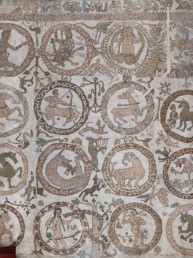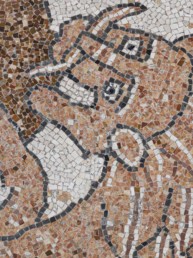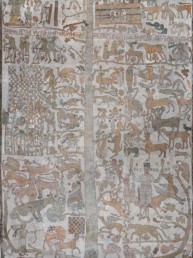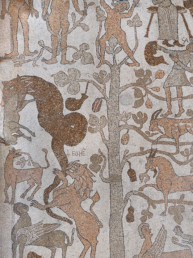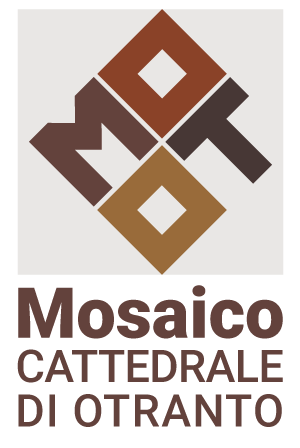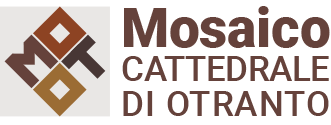Restaurations of the mosaic and archaelogical finds
Studies, surveys and restorations
Over the course of its existence, and particularly from the 19th century onwards, the mosaic has been the subject of various studies, surveys and restauration projects.
If no historical memory regarding the original drawings or plans is preserved in written form in the documents held by the diocesan archive, the maintenance and restoration work on the mosaic carried out in the late 19th and early 20th centuries is documented in the archives of the Civil Engineering Department or the local Archaeological Heritage Department.
History
Rebirth of the mosaic over the years
The restoration work carried out in 1936 can be traced back to the reconstruction of missing parts of the mosaic and “patches” using reinforced concrete which, in the decades that followed, was the cause of significant bulging and numerous cracks and holes, with these being filled in with white limestone tiles in 1960.
The problem soon caught the attention of the Apulia Department of Environmental, Architectural, Artistic and Historical Heritage, which kickstarted a range of collaborations with the Central Institute for Restorations, the Opificio delle pietre dure in Florence, the Faculty of Engineering at the Polytechnic University of Bari and specialised tradespeople in this field. An assessment needed to be made in terms of which route to follow regarding restoration, with the decision being made to use the traditional detachment technique with the help of new tools.
In November 1986, Mgr. Vincenzo Franco tasked Carlo Signorini and his staff with carrying out this undertaking.
The first 80-m2 part was cleaned and sectioned off, following the contours, before various sections were detached, placed on canvas and had casts made of them, on which the various sections were later cleaned of any plaster.
After the mosaic was removed, the substrate was cleaned.
Only a few centimetres of digging revealed slabs of Lecce stone, the remains of marble columns, a lion and, to the great surprise of the archaeological team, the discovery of an ancient mosaic 60 cm down with geometric patterns that dated back to the first centuries of the Chrisitan era (4th and 5th centuries.
Although of modest artistic and literary value, this Late Antiquity mosaic measured several square metres and was characterised by bold geometric motifs and delicate floral patterns, including octagons intertwined with one another to form a square in the centre, concentric circles that turn into four-leaf clovers and squares with circles in the centre.
This ancient mosaic was then completely detached, cleaned and sampled.
Over the last few years, the mosaic has been subject to an incredible restoration project. Different pieces of the mosaic recovered during the restoration have been added to the exhibits at the renovated MUDO (Diocesan Museum of Otranto), located in the stunning Palazzo Lopez.
After the detachment and sampling of the late Christian mosaic was complete, the Taranto Archaeological Heritage Department carried out a stratigraphic and scientific survey.
It was during this investigation of the site that 42 burials, including 2 Messapian (4th to 5th centuries), both of which included trozzelle (Messapian pots with sharp-angled handles), plates, lanterns and pieces of black ceramic decorated with red figures; 3 Roman (2nd century) with glass and ceramic unguentaria (ritual oil containers used for funerary rites) and bone needles; and 37 Byzantine and Medieval containing human remains, fibulae (brooches), the remains of a tunic and a coral necklace.
Once the excavations were completed, a new foundation was laid, on which, after being cleaned and restored, the various sections of the mosaic were put back in place.
On 1st July 1992, after six years, the mosaic’s great tree and the extraordinary figures it contains were once again able to accompany the prayers of the cathedral’s many pilgrims and awe its many visitors.
Monitoring
Work and maintenance today
The mosaic is subject to periodic monitoring; in 2021, the mosaic underwent some maintenance due to the presence of rising and detached tiles that dated back to the reconstruction work the mosaic has been subject to over time.
